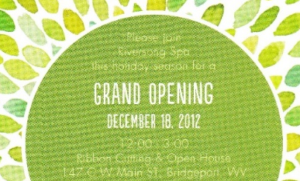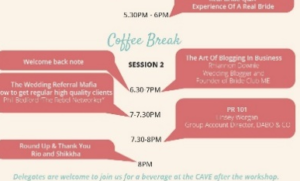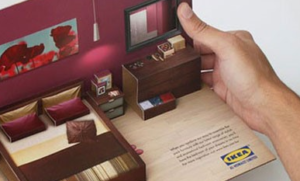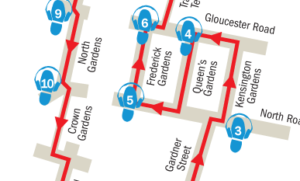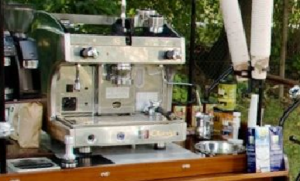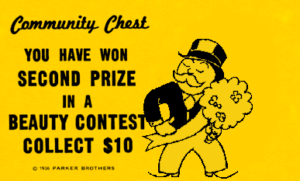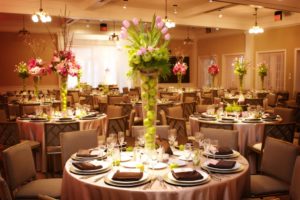Achieving the one guerrilla campaign that will keep people talking about your event for the next six months is far less about budget and much more about creativity and understanding your customers’ mindset. Unfortunately, it is also far less of a science and much more of an alchemist’s dream.
The problem is that great campaigns have to be such a fine balance of so many competing things. Guerrilla campaigns have to be one part creative genius, two parts intense planning and strategy, one part cool and one part strange or quirky. They need a big pinch of social resonance but be subtle enough to avoid labelling or cliché and include a dusting of cultural subversion.
That all gets pounded in a crucible of online scrutiny and after a puff of purple smoke you either turn lead into digital gold or burn your eyebrows off. Some campaigns have not worked because the balance has been wrong and have resulted in millions of pounds in fines and even prison sentences. The fact is: not only is it getting harder to be noticed it’s also getting harder to predict what people take notice of and why.
That said, there are some great examples out there that event organisers can have a think about when planning their marketing campaigns. We’ve listed some of these creative event marketing ideas below:
Reverse Graffiti
 With only a handheld pressure washer and a pre-cut stencil, Paul Curtis, a.k.a. Moose, was able to quickly create a style of street art that was championed online for its environmental credentials and boldness. He’s worked with Starbucks, Philips, 1Channel 4’s Big Brother and Vans’ ‘Off the Wall’ campaign. Here he makes a statement for a homeless charity crisis.org.uk that was eye-catching and perfectly legal. After all, you can’t get in trouble for cleaning up the streets. Can you?
With only a handheld pressure washer and a pre-cut stencil, Paul Curtis, a.k.a. Moose, was able to quickly create a style of street art that was championed online for its environmental credentials and boldness. He’s worked with Starbucks, Philips, 1Channel 4’s Big Brother and Vans’ ‘Off the Wall’ campaign. Here he makes a statement for a homeless charity crisis.org.uk that was eye-catching and perfectly legal. After all, you can’t get in trouble for cleaning up the streets. Can you?
https://streettoolbox.wikia.com/wiki/File:17012008_124452_abbey_road3.jpg
Flash Mobs
Flash mobbing is not new but internationally since 2000 they have been increasingly popular. US prank collective Improv Everywhere really kicked off modern flash mobs with their ‘No Pants Subway Ride’ in 2007, which is now an annual event. With some amazing covert planning in 2008, the group succeeded in bringing together 200 people in New York’s Grand Central Station, to form Frozen Grand Central, causing no end of confusion to station workers and passers-by. Some even rang local radio shows completely bewildered by what they were seeing. In the UK, 2009 saw one of the most memorable flash mobs: T-Mobile’s ‘Life’s for Sharing’ event saw amateur dancers cover the floor of London’s Liverpool St railway station in a seemingly spontaneous act of collective musical magic. The YouTube video received 39.7m views. They tried it again however with ‘Welcome Back’ at Heathrow Terminal 5 in Oct 2010 but the impact was less than half of the original, still gathering a huge 14.6m YouTube views.
Rumour and Cultural Subversion
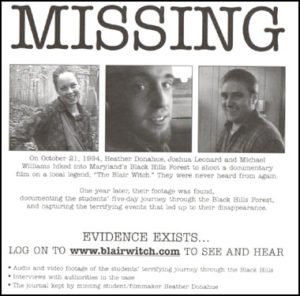 Not since Orson Welles interrupted radio programming on Halloween in 1938 to read ‘War of Worlds’ has anything managed to cause so much panic and so successfully blur the lines between fact and fiction. In 1999, three unknown actors and two independent filmmakers achieved it with nothing more than handheld cameras some woodlands in Maryland and very dodgy lighting. Haxan Films’ The Blair Witch project had a budget of only $20,000 and ended up grossing $248.6m, one of the most successful independent films ever made. The film creators successfully orchestrated a rumour mill that was able to stay ahead of the growing public demand for answers and drive audiences to the cinema. By first responding with silence, then insisting the urban legend was real, only much later revealing the truth that the whole thing was invented, generated a new urban myth that many people bought into. The Blair Witch Project remains today one of the most successful guerrilla marketing campaigns with its blend of half-truths.
Not since Orson Welles interrupted radio programming on Halloween in 1938 to read ‘War of Worlds’ has anything managed to cause so much panic and so successfully blur the lines between fact and fiction. In 1999, three unknown actors and two independent filmmakers achieved it with nothing more than handheld cameras some woodlands in Maryland and very dodgy lighting. Haxan Films’ The Blair Witch project had a budget of only $20,000 and ended up grossing $248.6m, one of the most successful independent films ever made. The film creators successfully orchestrated a rumour mill that was able to stay ahead of the growing public demand for answers and drive audiences to the cinema. By first responding with silence, then insisting the urban legend was real, only much later revealing the truth that the whole thing was invented, generated a new urban myth that many people bought into. The Blair Witch Project remains today one of the most successful guerrilla marketing campaigns with its blend of half-truths.
https://blog.hubspot.com/blog/tabid/6307/bid/33465/9-of-the-Most-Shocking-Guerrilla-Marketing-Campaigns-of-All-Time.aspx
Authentic Viral Marketing
Lots of things get labelled ‘viral’ when they don’t truly belong to the catalogue of incredibly successful campaigns. No-one really knows why they occur or when they strike. They tend to be extremely low budget but if creativity were currency these would be up with the biggest global campaigns. The Evian 2009 ‘Roller Babies’ campaign racked up 25m views in eight weeks, earning itself a place in the Guinness World Record books as the most viewed online advert. Its 2013 re-boot ‘Baby & Me’ has amassed an incredible 96.71m views to date.
The Australian Metro’s Dumb Ways to Die campaign targeted young people and the dangers of the railways but instantly went viral and hit 92.9m views on YouTube, with 11m downloads of its two apps. Dove’s ‘Real Beauty Sketches’ campaign generated record-breaking online interest, yielding more than 114m views in four weeks. Using a blanket approach, Dove uploaded the video in 25 languages to its official YouTube channels, reaching consumers around the world. And just in case you are wondering – Asian pop star Psy’ Gangnam Style, still holds the record as the most watched video on YouTube ever with an incredible 2.1bn views.
Record-Breaking Stunts
Urban Placements
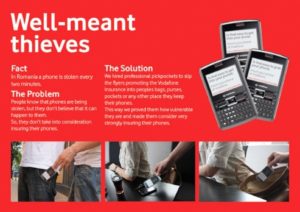 Product placements have always worked well in the movies but a whole new guerrilla marketing sector has grown up around urban placements to encourage online engagement. Subversive item placements are increasingly common and rely on powerful and humorous material to grab people’s attention or subvert the norm. At their best they become street art installations and attract both big brands, charities, campaign groups and start-ups. Coca-cola recognised the potential of subverting its own brand with its ‘Share a Coke’ campaign, while Vodafone’s ‘Well-meant thieves’ made people think about their phone insurance when it hired professional pick pockets to drop awareness flyers into people’s bags and pockets at railway stations with warnings about how easy it is to pick a phone from someone’s pocket.
Product placements have always worked well in the movies but a whole new guerrilla marketing sector has grown up around urban placements to encourage online engagement. Subversive item placements are increasingly common and rely on powerful and humorous material to grab people’s attention or subvert the norm. At their best they become street art installations and attract both big brands, charities, campaign groups and start-ups. Coca-cola recognised the potential of subverting its own brand with its ‘Share a Coke’ campaign, while Vodafone’s ‘Well-meant thieves’ made people think about their phone insurance when it hired professional pick pockets to drop awareness flyers into people’s bags and pockets at railway stations with warnings about how easy it is to pick a phone from someone’s pocket.
So, what do you think? Will you be using any of these creative event marketing ideas to promote your event? If so, we’d love to hear about your plans and how successful they are. Tweet us your thoughts @eventsforce.
https://adsoftheworld.com/media/ambient/vodafone_phone_insurance_wellmeant_thieves



